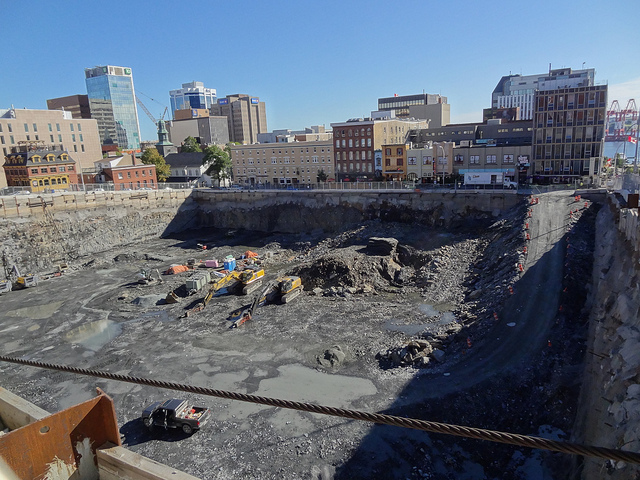Finally, unease about the Halifax convention centre — which will cost taxpayers nearly $400 million over the next 25 years — has a chance to come to proper public attention.
The developer, Rank Inc., is asking for 20 changes to the project that would have the effect of making some of the subsidized convention centre facilities smaller than originally planned, and the privately financed office and hotel space on top of it much bigger, thereby trampling further over already much-abused city bylaws. Halifax Regional Municipality has asked for public input April 29 at 6 p.m.
The economics of convention centres throughout North America are catastrophic and getting worse. This one was sold to the provincial cabinet and HRM council based on studies projecting wildly optimistic future business, which the auditor general slammed in a 2012 report as he called for proper studies. The public is mostly against it, as even minister Peter MacKay admitted when it was time for the federal government to kick in. The use of the federal money may be the most outrageous of all — a $46-million general infrastructure fund meant for roads, bridges, schools and hospitals throughout the province will go entirely to the convention centre.
The argument for it was stated by Scott Ferguson, CEO of Trade Centre Ltd., in last Saturday’s edition: “Cities build convention centres for the economic impact and tax dollars they generate.”
Yes they do, but it doesn’t work. Not any more. Maybe before, but not in the present ruinous race to the bottom. Before I get to that, a couple of points.
The usual game is to dismiss critics as a gang of downtown pinkos who are “against everything.” In this case, you’d have to include the Wall Street Journal, which follows convention centre economics and a while back had this mocking headline: “Have we got a convention center to sell you: From Boston to Austin politicians spend money on fancy white elephants.”
And let me introduce you to Allan Robertson, engineer and market consultant with Canadian and world experience in tourism and regional development, strategic planning for industry organizations, and market analysis, and a retired “blue-suited member of the establishment.”
He has, along with hard analysis of the figures, the one idea in all this that makes sense: pay off the developer for work done so far — essentially an underground parking garage — and call for tenders for something else to be built on the site. For perhaps $15 million, the province would save some $200 million. Then upgrade WTCC facilities, which are adequate even if not ruinously majestic. He and others are taking this argument to the city and the province. I suggest they listen.
Insofar as there has been public debate so far, it was kicked off four years ago by a column I wrote based on the work of Heywood Sanders, the University of Texas expert on convention centres. I asked him what has been the trend since. “Worse,” he said. In the U.S., convention space expanded by 35 per cent from 2000 to 2011, while attendance dropped by almost two per cent, and the trend continues.
Moreover, many cities that are a cycle or two ahead of Halifax are into desperate measures. Some are actually giving their space free of charge — essentially paying conventions to come — while others are adding casinos, turning them into shopping space and offices, and grasping onto anything to stem the losses.
But that’s the U.S. This is Canada, the Halifax promoters have protested. Alas, Sanders follows Canada, too. It’s actually worse here, he says — with big new centres in Niagara Falls and Ottawa and an expansion in Winnipeg on the way. Meanwhile, he monitors Vancouver and Toronto, where convention business has declined in the last four or five years.
What about Halifax being unique? They all say that, he says. They also all proclaim their desire to be “world-class.” And, like Halifax, they all come up with overly optimistic consultants’ reports.
Why is the grip of convention centre boosters so tight on local politicians? Because, he says in an upcoming book entitled Convention Center Follies, drawing convention business isn’t the main thing. The classic calculation is that they’re loss leaders for downtown development, with the public purse supposedly making it up in tourist taxes.
Fine when it works. When it doesn’t, they’re subsidy-sucking machines in which losses are considered beside the point — tomorrow’s problem, like government debt. A poor attitude for free enterprisers, but that’s the theory in Halifax, too. Like other jurisdictions, with massive supply and dwindling demand, we’re into white elephant economics.
What would make Halifax unique is if the McNeil government pulled the plug on it, stopped the fantasy in its tracks and called for a realistic development.
Ralph Surette is a freelance journalist in Yarmouth County. This article was first published in the Chroncile Herald.
Photo: Jamie Moore/flickr




